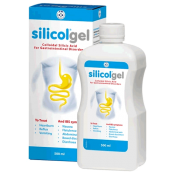An introduction to high FODMAPs
In this section we once again break the FODMAP foods into their different categories (bearing in mind some might be an issue but not necessarily all) and have a look at the typically problematic foods. Trialling a FODMAP diet may allow you to discover what foods are acting as triggers and what foods you can class as safe and enjoy again!
Oligosaccharides
Fructans/FOS
Fructans are a type of carbohydrate made up of short chains of fructose, more specifically those 2-9 units long are called fructo-oligosaccharides (FOS) and those with 10 or more units are known as inulin.
Fructans are arguably the biggest class of food contributing to the FODMAP group, although in all areas foods are constantly being added to the list after further analysis. A wide variety of foods are found to contain fructans as can be seen below:
- Fruit: nectarines, watermelon, plums , pomegranate, grapefruit
- Vegetables: artichokes, cabbage, onions, shallots, spring onions, leeks, garlic, asparagus, broccoli, Brussels sprouts, fennel
- Grains: sources of wheat, rye, barley
- Legumes & Nuts: chickpeas, lentils , beans (all), pistachios, cashews, almonds
- Additives/supplements: inulin, some prebiotic supplements, dandelion tea
GOS
Galacto-oligosaccharides are short-chain carbohydrates made up of the monosaccharides galactose and glucose joined together. Generally GOS are only found in legumes which include:
- Legumes: chickpeas, lentils, beans (all)
Scared your diet is going to be very limited? Don’t worry; we have listed some fantastic alternatives in our FODMAP friendly foods section.
Disaccharides
Disaccharides are carbohydrate units (sugars, or more specifically double sugars) made up of two monosaccharides. There are three common dietary disaccharides: lactose, maltose and sucrose.
Lactose
Lactose in particular is commonly not well tolerated in Western societies and is a component of the problematic FODMAP group. Maltose and sucrose intolerances are rare and aren’t part of the FODMAP framework. Sources of lactose include:
- Milk products: cows, sheep and goats’ milk products
- Cheese: cottage cheese, ricotta, mascarpone
- Other: ice-cream, custard, condensed milk, evaporated milk
- More tolerable appearances: butter, margarine, yoghurt, cheeses: brie, camembert, parmesan, cheddar, feta
Lactose is also commonly found in a variety of products including baked goods, confectionary and some more unexpected sources including processed meats such as sausages, breakfast cereals and other processed foods, so always read the label to double check.
Monosaccharides
Monosaccharides are single carbohydrate molecules often known as simple sugars. Common dietary monosaccharides include glucose, galactose and fructose.
Fructose
Fructose is a component of the FODMAP framework and examples of foods to watch for are listed below:
- Fruit: apples, mango, pears, melon (honeydew and watermelon), tinned fruit, cherries, fresh figs, dried fruit,
- Vegetables: asparagus, artichoke, sugar snap peas, cabbage, sun dried-tomatoes/tomato paste
- Sweeteners/others: concentrated fruit sources, e.g. fruit juices, honey, high fructose corn syrup, agave, sweet wines
Polyols
Polyols occur naturally in certain fruit and vegetables but are often also readily used in the manufacturing of artificial sweeteners. Specific examples can be found below:
- Fruit: apples, apricots, blackberries, cherries, pears, peaches, plums, prunes, watermelon
- Vegetables: mange tout, cauliflower, mushrooms, sweet corn, bell pepper, celery, sweet potato, avocado
- Additives/sweeteners: sorbitol, mannitol, maltitol, xylitol.
The polyols, which function as artificial sweeteners, are readily found in sweets, soft drinks, desserts and chewing gum, so always be sure to check the ingredients list.








